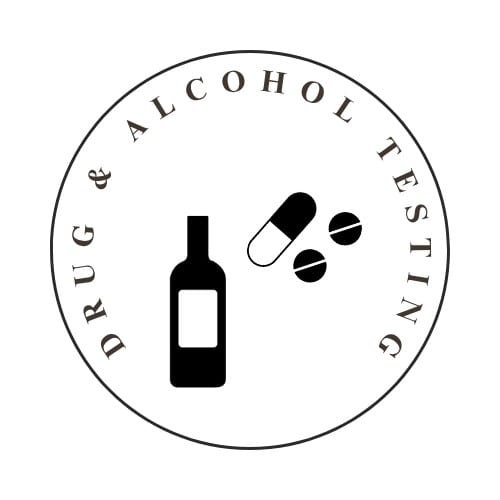
We are pleased to announce that dadcheck®gold now provides drug and alcohol testing to adhere to Family Court requirements.
Our mission is to help local authorities and the legal profession with the resolution of complex family issues, where drug and alcohol usage is a factor.
We have available a comprehensive suite of reliable and accurate drug and alcohol testing services. We aim to be cost effective and responsive, in order to provide our clients the answers they need, in a timely manner.
As with our DNA testing services for human relationship testing, we have a team of highly trained customer service advisors who will manage your case from initial enquiry to delivery of the results.
We will always advise on the correct test for the needs of the case, we will neither under nor over suggest assays – our aim is to help you resolve the case with the most appropriate data, as quickly as possible.
We offer data interpretation services (including Expert Witness Statements or EWS) which can be requested with each case, so our clients always know what the results actually mean in real terms.
What’s Included
We arrange and co-ordinate sample collection of hair, urine or blood spots from the parties identified to us and also from multiple participants in the same case, if required.
A nationwide network of trained collectors is available – our collectors are highly experienced in dealing with what can sometimes be fraught situations.
We are experienced at sampling in prisons, hospitals and will make all the necessary arrangements.
There will always be a high level of communication, we will keep you informed every step of the way, generally by e-mail.
We offer sample chain of custody from the person to be tested (including ID checks) to the laboratory and a barcode driven sample tracking system through to the result we deliver to you.
Get A Quotation!
Please make sure your contact details are complete as we may need to discuss with you the drug testing options, the alcohol testing options or both.
A section below will offer some information on the technical detail of both drug and then alcohol testing.
Most often, the request for a drug or alcohol testing will be via a court order, but we do accept direct requests from Local Authorities, social services and the legal profession.
Types of Drug and Alcohol Tests We Offer
Summary of sample types needed from the donor:

Hair Testing for Drugs and Alcohol
The use of hair and indeed sections of hair is accepted as a reliable method to determine any trends in drug and alcohol use.
Equally, it can be used to prove abstinence over a period of time. Three month periods are used. You can request 3, 6, 9 or 12 months (up to 4 sections) for a number of different drug types and/or an alcohol usage test. The detection window is up to 90 days. Hair is generally taken from the head, but other body hair (chest, armpit, leg) may be used. Hair sampling is non-invasive, difficult to obfuscate or adulterate and there is no special preparation required for the sampling.
If we obtain a high measurement, this could indicate either frequent use or use of higher doses. Conversely, lower measurements could indicate either lower doses being used or the substance being used less frequently. As with all data, context is everything!
The occasional false positive result might occur, due to the absorption of a related substance into the hair. To mitigate this, incoming hair samples are washed before analysis.
Hair Testing for Drug Use
We can test for drugs the following groups (standard service is given[2]) plus additional drug tests are as follows, with selected examples:
- Amphetamines: Amphetamine, MDA, MDEA, MDMA, MBDB, methamphetamine e.g. Ecstacy and Molly
- Benzodiazepines: Chlordiazepoxide, Desmethyldiazepam, Diazepam, Temazepam, Flurazepam, Midazolam, Nitrazepam e.g. Valium, Xanax
- Buprenorphine: Buprenorphine, Norbuprenorphine
- Cannabis: delta-9-trtrahydrocannabnol, 11 Nor delta -9- THC carboxylic acid e.g. Hashish, Marijuana
- Cocaine: AEME, benzoylecgonine, cocaethylene, cocaine, Norcocaine
- Methadone: Methadone, EDDP
- Opiates: 6-acteyl morphine, Acetylcodeine, codeine, diacetylmorphine (heroin), dihydrocodeine, morphine
- Additional: Fentanyl, Ketamine, LSD, mephedrone, Tramadol, Zolpidem
If use of other drug types is suspected, upon request we can conduct a screen of the known drugs in circulation, including Novel Psychoactive Substances (NPS).
Combinations of drugs and mixes may have been used, for example “meth and cocaine” or “meth and molly” and we will always be cognisant of this.
Hair Testing for Alcohol Usage
In terms of chronic alcohol abuse, the court may order two hair alcohol markers ethyl glucuronide (EtG) and/or fatty acid ethyl esters (FAEE). They serve different purposes (see FAQs) but of course have the advantage of showing alcohol usage over a longer period of time compared to say, blood, breath, urine or saliva.
EtG and FAEE are chemicals which are produced (known as metabolites) after alcohol has been consumed and can be used as an indicator or “marker” of chronic alcohol use[1]. Alcohol itself is volatile and indeed, could be absorbed into the hair from the outside, so it cannot be measured directly, but EtG and FAEEs are direct indicators of the consumption of alcohol. For information, we use the sum of the amounts of four different FAEEs, which are ethyl myristate, ethyl palmitate, ethyl oleate and ethyl stearate.
Hair testing for alcohol markers is not absolute, it is a set of data to be used in support of other evidence and often to support any claim of abstinence. It is also useful for detection of chronic alcohol usage over a longer period of time, which is often a requirement for child custody/child protection or legal proceedings.
The testing of drugs and alcohol often occur together, it is in fact frequent that in recovery from a drug usage, people may turn to alcohol, either chronic or acute (binge drinking).
To help with this, we can also provide SCRAM continuous alcohol monitoring and a breathalyser function.
To summarise, hair testing for drug and alcohol usage:
- Is non-invasive
- Is legally defensible by precedent
- Provides a long window of detection – month by month and overview
PEth Testing
In the last few years, a marker of alcohol consumption which is direct, sensitive and very specific for alcohol consumption has become available.
This is testing for Phosphatidylethanol or PEth. It is a valuable tool in the assessment of alcohol consumption over a 2- 4 week period and is superior to the other methods currently available in that the PEth data can also help determine different levels of alcohol consumption.
In fact, PEth has found a niche in the testing arsenal for the verification of changes in drinking behaviour and for monitoring relapse and abstinence. This is particularly useful in case management within Local Authorities and of course for legal purposes.
Samples for PEth testing are collected using a dried blood spot, via a simple finger prick. Not only does this confer stability for up to 6 months at room temperature, but it is very convenient for transport and archiving.
There are some limitations to be aware of, in that certain products or medical conditions may cause an increase in Peth and result in a false positive. For example, alcohol-based hand sanitizers can be an issue and we of course plan for this. Inter individual variation may also play a role, not least genetic differences, medical issue in liver function and body mass. Again, we will take account of this.
Please note this work is conducted both in house and in conjunction with ISO/IEC 17025:2017 accredited partner laboratories. Upon request (chargeable), we can provide an Expert Witness Report (EWS) for family court usage.
The EWS is an explanation of the chain of custody, the testing procedure and an interpretation of the results. The report is directed to the family court according to protocol.
[1] Multiple Drug Classes – Amphetamine, Benzodiazepine, Buprenorphine, Cannabis, Cocaine, Methadone, Opiates, EtG – Ethylyglucuronide, FAEE – Fatty Acid Ethyl Esters, Peth- Phosphatidylethanolamine, CDT- Carbohydrate deficient transferrin test, LFT- Liver Function test, FBC – Full blood count and Mean Cell Volume
[2] Amphetamine, Benzodiazepine, Buprenorphine, Cannabis, Cocaine, Methadone, Opiates
[3] The Society of Hair Testing consensus on general recommendations for hair testing and drugs of abuse testing in hair
[4] Ministry of Justice Family Procedure Rules Part 25 Expert and Assessors and Practice Directions 25A Experts and Assessors
Have a question? Send us a message.
Our award winning customer service team will be pleased to help you.
"*" indicates required fields







